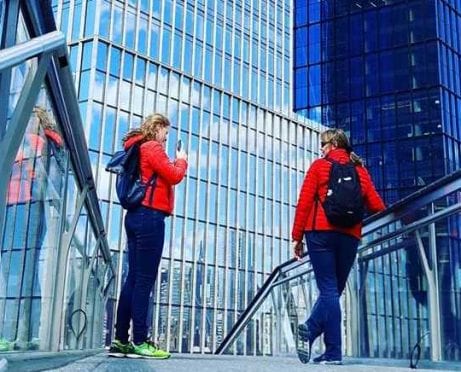
 An average home today sprawls over 2,300 square feet. That’s about 1,000 square feet larger than a typical home in the 1970s. Ironically, family size has either remained the same or, in some cases, gotten smaller. No wonder many people — including those with families — are looking for smaller, cheaper living options. And for those who want to lead a minimalist life, there are plenty of unique alternative housing solutions out there.
An average home today sprawls over 2,300 square feet. That’s about 1,000 square feet larger than a typical home in the 1970s. Ironically, family size has either remained the same or, in some cases, gotten smaller. No wonder many people — including those with families — are looking for smaller, cheaper living options. And for those who want to lead a minimalist life, there are plenty of unique alternative housing solutions out there.
1. Tiny House
Tiny homes are becoming more and more popular minimalist housing options. From Florida to Washington State, these extra-small living spaces are proliferating.
The average tiny home typically ranges in cost from $10,000 to $40,000. That would be a steal even without considering how much you’ll save on utilities. They are comfortable, cozy, and come with everything you would get in a regular home — you’re just saving on space.
2. Houseboat
Houseboats are slowly making a splash among the alternative housing solutions. Many boast around the same square footage as tiny homes (400 square feet or fewer). However, the real treat that houseboats pose as an alternative living option is the chance to live on the water, as well as the capacity to travel if you want.
There are a few cons to living this way. For one, maintenance and repairs can get expensive, especially if you aren’t the handy type. Additionally, houseboats can be subject to fees, such as a “full-time living” fee that some marinas charge. However, if you live in an area like San Francisco or Miami, these costs are often minimal compared to renting an apartment or buying a home.
Houseboats are the most expensive of the alternative living solutions discussed here. They can cost between $125,000 and $250,000, which is expensive but you get the same views as a traditional waterfront home for a fraction of the cost. Best of all, if you don’t like the view, you can just set off to find another!
3. RV
While RVs have long been popular alternative housing solutions for long-term travel, they’re also being turned into full-time living spaces these days. RV living can be one of the better minimalist housing options if you love traveling and don’t have a lot of money to invest in a living space.
From travel trailers to class A motorhomes, there’s a floor plan and option for any minimalist looking to hit the road.
Get 40% off your first booking
As with every tiny-living space, there are a few chores and responsibilities that come with an RV, which can include emptying and cleaning toilet tanks, gas costs, and usually the expense associated with not having your own washer and dryer. Many full-time RV-ers consider these cons minimal in light of all the benefits. RVs can set you back as little as $10,000 or as much as $300,000.
4. Tree House
One of the cheapest alternative housing solutions, a tree house is the perfect off-the-grid solution for the wilderness-loving minimalist. Many tree houses don’t have typical electric or plumbing setups, something you may want to consider before building your own.
If you aren’t handy, building a tree house probably isn’t for you. Not only do you have to take extra precautions when constructing one (like making sure it won’t fall out of the tree), but you also need to secure it against rain, sleet, snow, and other types of weather. Still, if you’re looking for the least expensive alternative living solution, then this is the perfect minimalist housing option for you.
5. School Bus
A school bus, or “skoolie,” is becoming super popular in the tiny-living community, especially among families with kids. For many people, a school bus can offer a clean slate on which to build whatever fits them and their families best. For singles, that can translate to extra closet space. And for couples or those with children, that can mean the ability to section off different areas for each person.
A used school bus is typically purchased through an auction or directly from a public school, so prices can vary wildly. If you choose to go this route, it’s important to remember that you have to start from scratch and convert it to a livable space. While you can do this inexpensively, sometimes it can be best to invest in quality amenities to ensure they can last.
6. Shipping Container
Shipping containers are among the lesser-known alternative housing solutions, mainly because they’re a bit harder to convert. But if done right, a shipping-container home can be a comfortable, cheap, minimalist living option.
Used shipping containers can vary a great deal, but typically fall between $1,500 and $2,500, according to Off Grid World. Since there are so many, you can find them just about anywhere — but don’t just buy blindly. When purchasing a shipping container, it’s important to inspect it firsthand. Many aren’t considered eco-friendly or livable because of the lead-based paint or toxic chemicals that they once carried. Additionally, be sure to watch out for rust or a damaged roof.
Get a Free Quote With No Obligation
7. Train House
If you’re interested in the shipping container and school bus, there is the alternative housing solutions for you: the train house. Whether you like heavyweight, lightweight, or stainless steel cars, you can have a house that has probably seen more of the country than you have. The best part of living in a converted train is that they are still active locomotives! You can ride through Canada, on Amtrak, and on many local rails. If you have ever wanted to explore the country from the comfort of your own bed, here is your chance!
While train houses can vary in price, do be aware that they are generally expensive. Cars can range anywhere from $200,000 to upward of $500,000, but come with a vintage flair that’s hard to find in other tiny homes.
8. Mobile Home
While some people may think of a mobile home as a “trailer park” option, it doesn’t have to be that way. In fact, with a mobile home, you have a house that’s ready to go from the outset. Just put it on a little bit of land and call it a day.
So if you prefer to be stationary, a mobile home is right up your alley because it doesn’t move well. In fact, it can run you a small fortune whenever you try to pick up and leave. This alternative living option will offer more square footage and a homier feel for those minimalists who don’t really like living in an especially small space. Though the price does depend on its size, the average mobile home costs $81,000.
9. Shed
If you thought the shipping container wasn’t minimalist enough, the shed is the alternative housing solution for you. Instead of storing bikes and power tools in the backyard shed, why not consider putting in a bed and small dresser instead?
These minimalist homes are green, inexpensive, and form what essentially amounts to another version of the tiny home.
At an average price of $1,000 to $30,000, according to The Wayward Home, building and renovating the shed shouldn’t be too much of a hit to your wallet. It would certainly be less than a mortgage!
The Bottom Line
Minimalist housing can be excellent alternatives to the traditional family home. Each option has its own unique qualities, so be sure to do your research to pick the best one for you. Always remember to stay within your means and to double-check that whichever house you choose is one you can afford.











